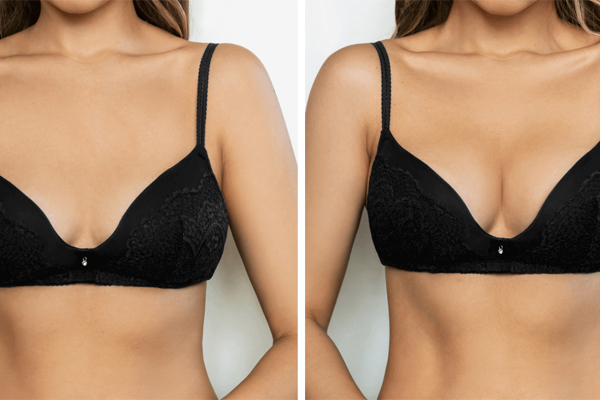Breast Augmentation
Breast augmentation, also known as augmentation mammoplasty, is a surgical procedure designed to enhance the size, shape, or symmetry of the breasts. It is one of the most popular cosmetic surgeries and is typically chosen for aesthetic reasons, reconstruction after surgery (such as mastectomy), or to correct asymmetry.
WE BELIEVE IN RENDERING A " NATURAL LOOK AND FEEL" TO EVERY WOMEN
INDICATIONS
- Correction of asymmetrical breast
- low self-esteem due to small breasts
- More proportationate breast to fit better in clothings
- Post pregnancy and post weight loss breast voilume restoration
- Improve sexual life
- enhance your breast appeal according to profession
- Poland Syndrome
HIGHLIGHTS
- TIME REQUIRED: 1-2 HOURS
- GENERAL ANESTHESIA
- MILD TO MODERATE PAIN
- DAYCARE SURGERY
- IMMEDIATE VISIBLE RESULTS
- VERY HIGH SUCCESS RATE
WHO IS THE RIGHT CANDIDATE TO UNDERGO BREAST AUGMENTATION
- Patient not pregnant or breastfeeding.
- Breasts are fully developed or age more than 22 years
- Breasts small, asymmetrical or tuberous breast deformity.
- You are dissatisfied about losing shape and volume after pregnancy or significant weight loss.
- Post pregnancy and post weight loss deflated breast
- Gender re-assignment Breast augmentation (Top Surgery – Male to Female gender reassignment)
Types of Breast Augmentation
-
Breast Implants:
- Saline Implants: Filled with sterile saltwater. If they rupture, the body absorbs the saline.
- Silicone Implants: Filled with silicone gel. These feel more natural but require regular monitoring to ensure they are intact.
- Structured Implants: A combination of saline and silicone benefits, offering a natural feel with saline fill.
- Gummy Bear Implants: A type of silicone implant that retains its shape even if the outer shell breaks.
-
Fat Transfer Breast Augmentation:
- Uses liposuction to remove fat from other parts of the body (like the thighs or abdomen) and inject it into the breasts.
Different types of incisions that can be made to place the implants are:
- Inframammary: In the chest crease underneath the chest.
- Transaxillary: Near the arm pit.
- Periareolar: halfway around the black area surrounding the nipple.
- Transumbilical: In the belly button/navel (Only for Saline implants)
Risks and Complications
- Implant rupture or leakage.
- Capsular contracture (scar tissue squeezing the implant).
- Infection.
- Changes in nipple sensation.
- Implant displacement or asymmetry.
- Long-term maintenance, such as implant replacement.
- Mammography shadow which can affect ca breast detection
Recovery
- Initial recovery takes 1-2 weeks; full recovery may take several months.
- Wearing a supportive bra and following post-op care instructions are crucial.
- Regular follow-ups with the surgeon are necessary to monitor results.
Considerations
- Choose a board-certified plastic surgeon with experience in breast augmentation.
- Understand the potential need for future surgeries or maintenance.
- Be clear about your goals and realistic about outcomes.
FAQs
1. What are breast implants?
A breast implant is a device used to change the shape, size, and contour of a person’s breast. It can be placed in different plane to restore a natural-looking breast .
2. How safe they are ?
Silicone implants are FDA-approved and it is much safer than before
3. Does breast implants feel Diffrent to touch?
No, Implant gives you natural feel . But post surgery it takes 6-8 weeks to feel the same.
4. How much is the cost of surgery
It depends on the patient"s profile, the type of implant, its brand, the technique used, anaesthesia fee and pre operative investigations.
5. Is their any expiry of the implants
No , there is no expiry but the company gives warrenty of the implant till 10 yrs.
6. Is breast feeding possible in breast augmentatied patient.
Yes it is very much possible.
7. Is there any link of breast implant and breast cancer
No, with advanced techonology implants there is almost no risk of cancer breast.Studies tell people who have breast implants are not at a higher risk of developing breast cancer. However, in the tissue around the breast implant, rare cancers can develop.
Always choose US F.D.A approved implants.



